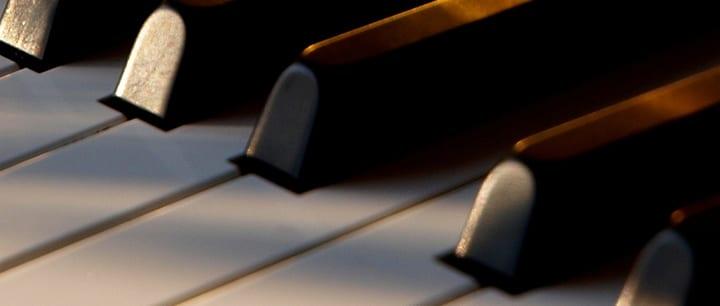 Have you decided to take piano lessons, but you don’t know where to start? In today’s guest post, you’ll learn some basic principles and tips on how to get your piano experience started in the right way:
Have you decided to take piano lessons, but you don’t know where to start? In today’s guest post, you’ll learn some basic principles and tips on how to get your piano experience started in the right way:
The time has come when you start to follow your piano dream. Even if you want only to play to entertain yourself or your friends, you should know some of the basic facts that will help you learn it the good way. There are many ‘by ear’ piano artists that don’t even know how to properly read a piano sheet. By reading this article about how to learn the piano, you will shortly become one of the best. Don’t be just an average piano player, become one of the best. So, let’s get started on the 9 basic steps that you need to know before you start your practice. The 9 steps are:
-
Learn the piano keys and get familiar with them
-
Learn the musical symbols and notes
-
Try some basic sounds in the beginning
-
Try different rhythms
-
Learn the timings
-
Treat the notes and the timings as a whole
-
Practice everything you learn more than once
-
Learn how to read the piano sheet music
Build your piano personality
1. Learn the piano keys and get familiar with them
Before you even start to understand how the piano works, you should familiarize with the piano keys. By understanding them you will quickly learn how to interpret and reproduce virtually any song on the piano. The black keys are known as sharps and flats and they appear in groups of twos and threes. Look for the set of five black keys (1 group of 3 and one of 2) that are in the center of your piano. Middle C is the white key to the left of the two black keys in the middle of the piano.
2. Learn the musical symbols and notes
The musical symbols and notes may appear difficult for a first-time piano player. The truth is that they’re really easy. They are like the alphabet of music. Once you get a grip of it, you’ll never forget it. Music notes are marked by the letters A B C D E F and G. The note from the center of the staff is Middle C. The notes from the top are higher-pitched notes and those on the bottom are the lower pitches.
3. Try some basic sounds in the beginning
After you are familiar with the piano keys and the musical notes, you should start to practice them by playing them on the piano. Try some basic sounds in the beginning, such as the famous do-re-mi.
4. Try different rhythms
So you know the notes and keys, and how to reproduce them. The next step is that you play and experiment with the rhythms. The rhythm is one of the most important parts of the songs. It will dictate if the listener will stick with you until the end of the song or not.
5. Learn the timings
Each piano sheet has timing. It’s the fraction at the left of the clef. The numerator represents the number of beats per measure while the denominator gives the note value for the beat.
6. Treat the notes and the timings as a whole
Practice enough that you can read and reproduce the sheet music at the intended rhythm. Understand that the timings and the rhythm has the purpose to create the song, along with the other parts. Every part is useless without the other. Do not neglect any of them, because the result will not be what you expect.
7. Practice everything you learn more than once
By practice I mean repeat. If you really like something to eat for example, you eat it several times. This also goes for music. You like a song, so you repeat it until you play it right.
8. Learn how to read the piano sheet music
Familiarize yourself with the piano sheets. They’re not hard to read once you understand the notes and symbols. It’s like reading a book. Don’t play by ear. There is an endless supply of free piano sheet music available online.
9. Build your piano personality
After you master the notes and keys, it’s time for you to choose a rhythm and genre. These are the two that will define you as the piano artist that you want to be.
This guest post is written by Mircea Popa, a piano enthusiast and creator of PianoForge.com, a free piano sheets collection website. On PianoForge.com you’ll find much more than simple sheets. Looking for piano sheets organized by artist name? Click here to view.
Suzy S.
